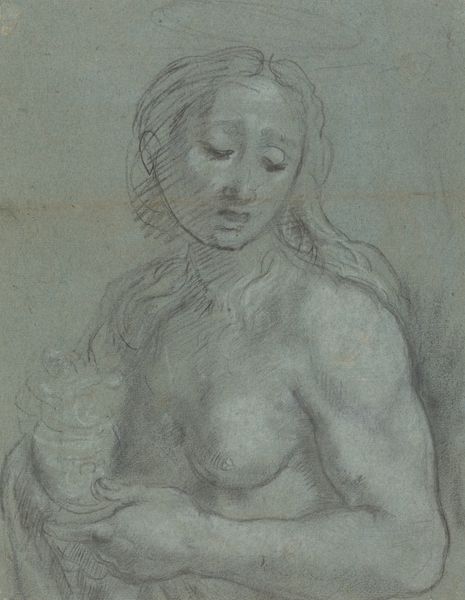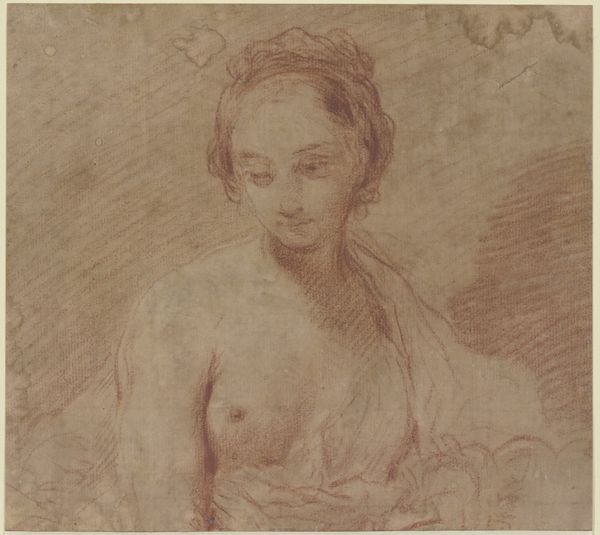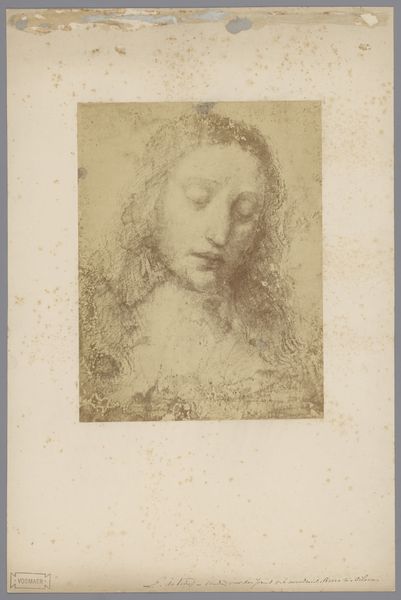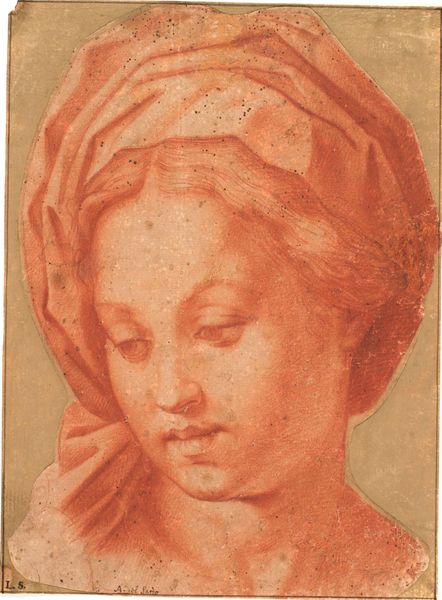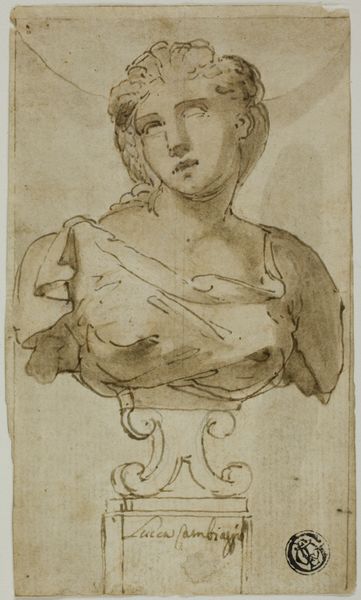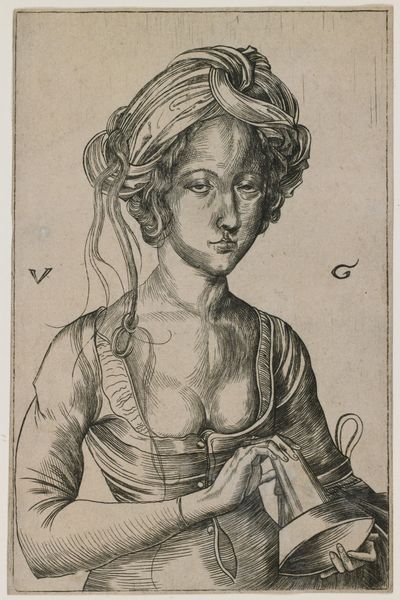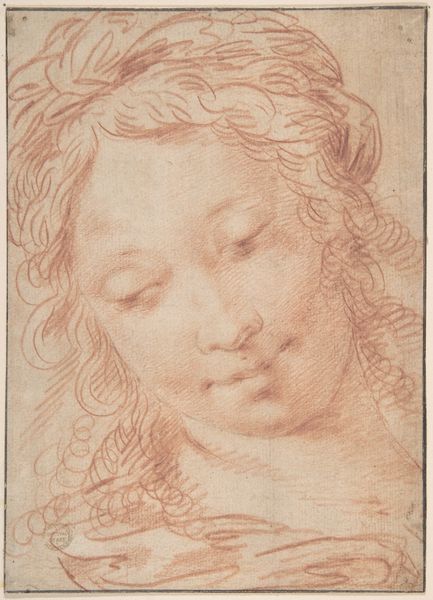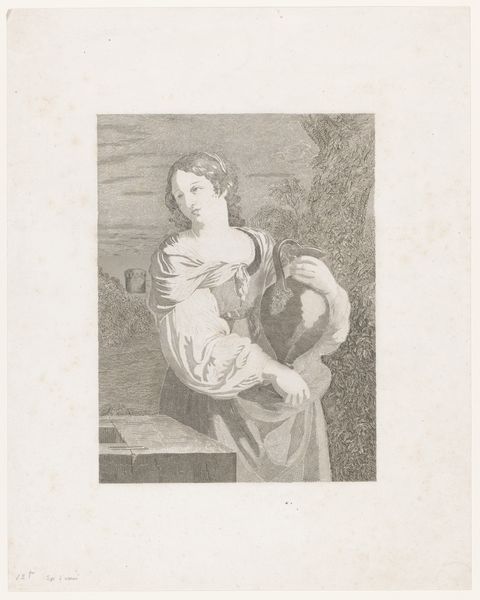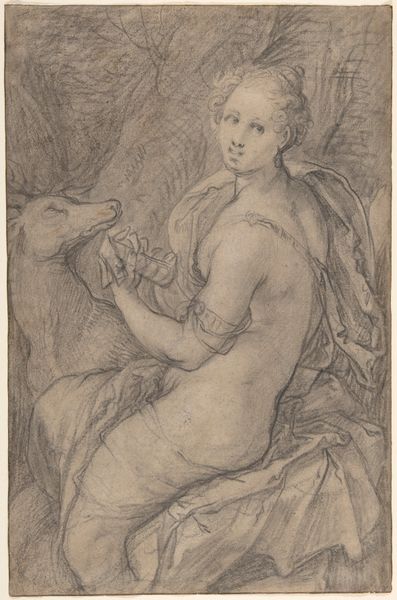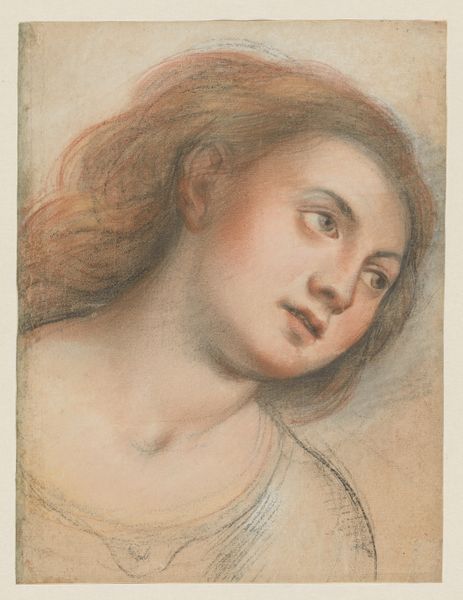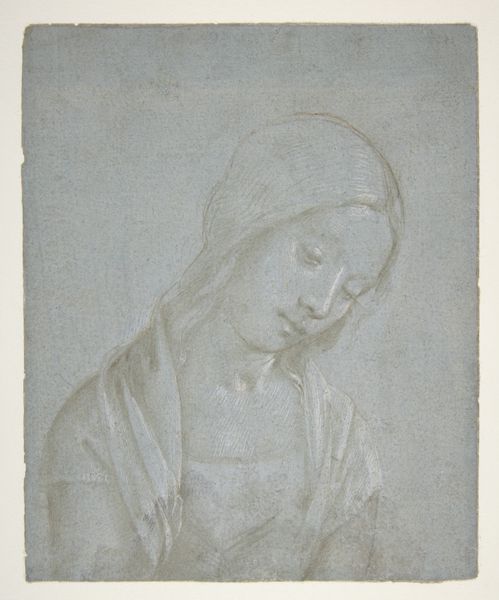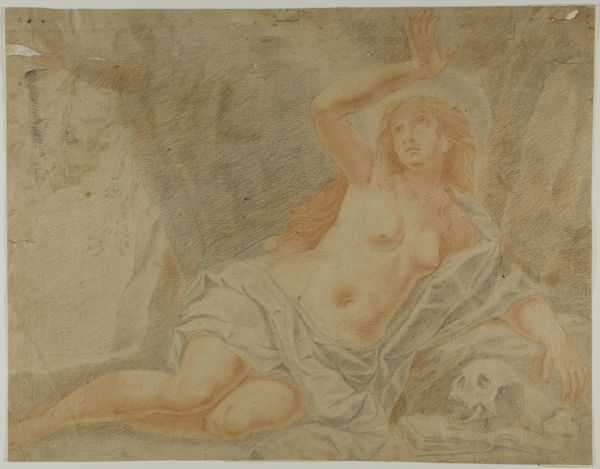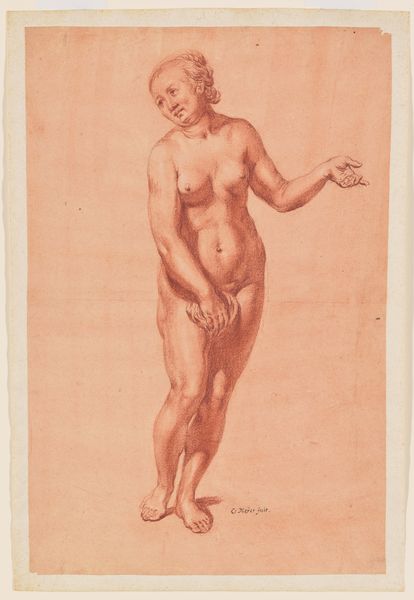
To kvindehoveder. Studier efter højre halvdel i Carlo Marattis maler: Selvportræt med Marquese Pallavicini, stourhead, National Trust, England (afb. Arte Antica e Moderna, 1961, nr. 181) 1671 - 1738
0:00
0:00
drawing, charcoal
#
portrait
#
drawing
#
baroque
#
charcoal drawing
#
figuration
#
charcoal art
#
pencil drawing
#
portrait drawing
#
charcoal
#
academic-art
Dimensions: 504 mm (height) x 354 mm (width) (bladmaal)
Curator: What strikes me immediately about this charcoal drawing is its tenderness. The two women depicted have this beautiful softness in their gaze. Editor: We are looking at Hendrik Krock's “To kvindehoveder. Studier efter højre halvdel i Carlo Marattis maleri: Selvportræt med Marquese Pallavicini, stourhead, National Trust, England,” or Two Female Heads: Studies after the right half of Carlo Maratti’s painting: Self-Portrait with Marquise Pallavicini, dating to somewhere between 1671 and 1738. Curator: The way Krock uses charcoal really accentuates the delicate features of his subjects. Notice how their eyes are downcast, their expressions almost shy. I’m interested in exploring the male gaze implications within these power dynamics and feminine presentations of women and what statements he's subtly trying to present or subvert through his charcoal art. Editor: It's interesting that this is a study. He's not directly depicting those subjects but copying from a detail in Maratti’s portrait, which inherently brings issues of status into play: Krock, an artist of the Danish court, is here engaged with a highly successful Italian painter who himself was depicting a Roman noblewoman and himself. Curator: Exactly! It’s also key to examine the original work’s function: was the Maratti designed as propaganda for Roman aristocracy, or as commentary? That reading shifts again when a Danish artist uses it to inform his craft in another political landscape decades later. Also how those two figures are cropped and redrawn it shows the intersectional aspects of women who are related together that have to maintain these connections for social stability, economic safety, and raising children. Editor: The drawing also highlights the importance of artistic training and the establishment of canons. The work demonstrates the Baroque emphasis on theatricality, using intense, often contrasting light and dark effects to heighten the emotional impact. We can think of how academies across Europe adopted, adapted, and standardized particular aesthetics that often had implicit politics, which is highlighted here with the work's reproductive qualities of reproduction Curator: It reminds us that every line, every shade, is a deliberate choice influenced by history, power, and the artist's own perspective. Editor: Indeed. And as viewers, we also bring our perspectives into understanding and judging not only the artwork, but also it’s political undertones. Thank you for opening up this perspective! Curator: My pleasure! Art always asks us to think critically about the forces shaping our perceptions.
Comments
No comments
Be the first to comment and join the conversation on the ultimate creative platform.
